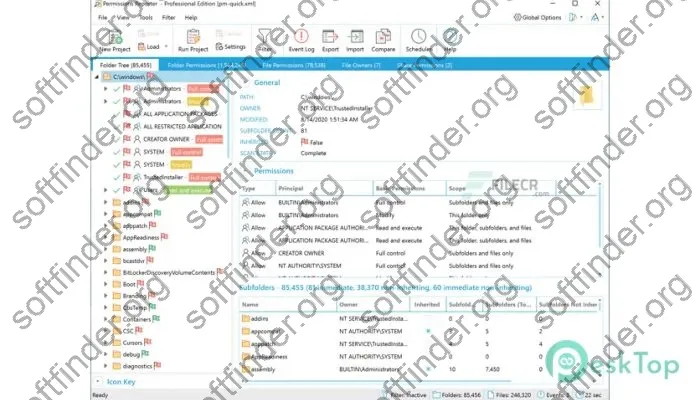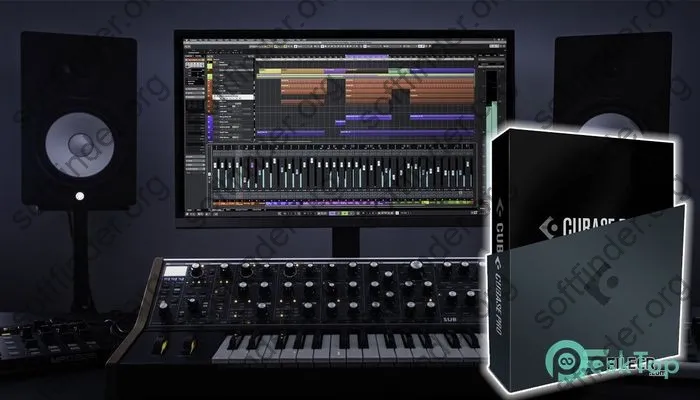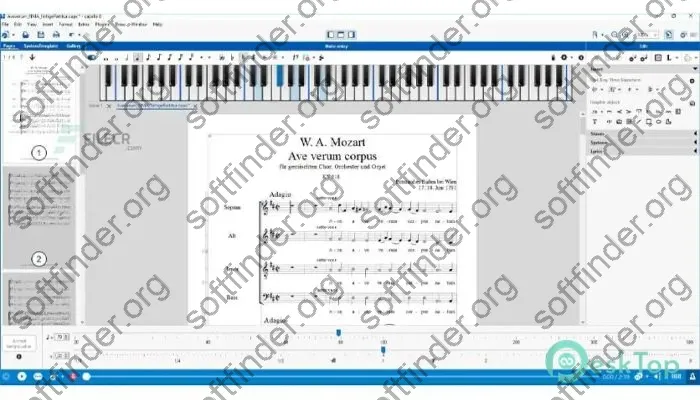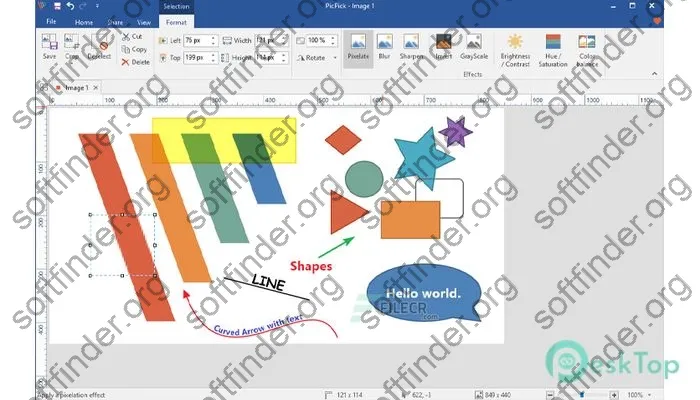Managing file and folder permissions is crucial for maintaining security and controlling access in Windows environments. However, as the number of files and folders grows, keeping track of NTFS (New Technology File System) permissions can become a daunting task. This is where the Free download NTFS Permissions Reporter Activation key comes into play, a powerful tool that simplifies the process of auditing and managing NTFS permissions.
- What is Download free NTFS Permissions Reporter Activation key?
- Why Use an Full version crack NTFS Permissions Reporter Activation key?
- How to Use Download free NTFS Permissions Reporter Activation key
- Key Features of Free download NTFS Permissions Reporter Activation key
- Interpreting NTFS Permissions
- NTFS vs Share Permissions
- Permissions Inheritance and Blocking
What is Download free NTFS Permissions Reporter Activation key?
NTFS Permissions Reporter is a feature-rich application designed to scan, report, and manage NTFS permissions on files and folders in Windows systems. It provides a comprehensive view of the permissions assigned to each object, making it easier to identify potential security risks, resolve access issues, and ensure compliance with organizational policies.
The tool works by scanning the specified files or folders and retrieving their NTFS permissions. It then presents the information in an easy-to-understand format, allowing you to quickly identify any over-permissive situations or inconsistencies. With NTFS Permissions Reporter, you can generate detailed reports, compare permissions across different objects, and even export the data to various formats (e.g., CSV, HTML) for further analysis or documentation.
Supported Platforms: NTFS Permissions Reporter is compatible with various versions of the Windows operating system, including Windows Server, Windows 10, Windows 8, and Windows 7.
Why Use an Full version crack NTFS Permissions Reporter Activation key?
Managing NTFS permissions manually can be a time-consuming and error-prone process, especially in large and complex environments. NTFS Permissions Reporter offers several benefits that make it an invaluable tool for IT professionals:
-
Simplified Permissions Management: Instead of manually checking each file and folder, NTFS Permissions Reporter provides a centralized view of all NTFS permissions, making it easier to identify and address any issues.
-
Improved Security: By identifying over-permissive situations, you can mitigate potential security risks and ensure that only authorized users have access to sensitive data.
-
Auditing and Compliance: The tool generates detailed reports that can be used for auditing purposes or to demonstrate compliance with industry regulations and internal policies.
-
Troubleshooting Access Issues: If users are experiencing unexpected access issues, NTFS Permissions Reporter can help pinpoint the root cause by providing insights into the permissions assigned to the affected files or folders.
See also:
How to Use Download free NTFS Permissions Reporter Activation key
Using NTFS Permissions Reporter is straightforward, and the tool offers a user-friendly interface. Here’s a general overview of the process:
-
Installation and Setup: First, you need to download and install the NTFS Permissions Reporter application on your Windows machine.
-
Scanning Files and Folders: Once installed, you can specify the files or folders you want to scan for NTFS permissions. The tool supports recursive scanning, allowing you to scan entire directory structures with ease.
-
Navigating the Interface: After the scan is complete, NTFS Permissions Reporter displays the permissions information in a clear and organized manner. You can easily navigate through the different files and folders, view the associated permissions, and identify any potential issues.
-
Customizing Reports and Output: NTFS Permissions Reporter offers various reporting options, allowing you to customize the output format (e.g., CSV, HTML) and filter the results based on specific criteria.
-
Taking Action: Depending on your findings, you can use the tool to modify permissions, remove excessive access rights, or document the current state for future reference.
Here’s an example of how you might use NTFS Permissions Reporter to resolve an access issue:
- A user reports being unable to access a specific folder on a shared drive.
- You launch NTFS Permissions Reporter and scan the folder in question, along with its subfolders and files.
- The tool displays the NTFS permissions for the folder and its contents, highlighting any potential issues or conflicting permissions.
- Based on the report, you can identify the root cause of the access issue (e.g., missing or incorrect permissions) and take the necessary steps to resolve it.
- After making the required changes, you can generate a new report to verify that the issue has been resolved and document the changes for future reference.
Key Features of Free download NTFS Permissions Reporter Activation key
NTFS Permissions Reporter is packed with powerful features that make it an indispensable tool for managing NTFS permissions. Here are some of its key capabilities:
- Recursive Folder Scanning: Scan entire directory structures, including all subfolders and files, with a single click.
- Filters and Search: Use filters and search functionality to narrow down the results and quickly find specific files or folders.
- Permission Comparison Reports: Generate reports that compare the permissions of two or more files or folders, making it easier to identify differences and inconsistencies.
- Export Options: Export the permissions data to various formats, including CSV and HTML, for further analysis or documentation purposes.
- Permissions Inheritance Management: View and manage permissions inheritance, including blocking or unblocking inheritance for specific files or folders.
- User and Group Reporting: Easily identify which users or groups have access to specific files or folders, and the level of access they have.
- Scheduled Scanning: Set up scheduled scans to regularly monitor and report on NTFS permissions, ensuring that any changes or issues are promptly identified.
Interpreting NTFS Permissions
To effectively utilize Full version crack NTFS Permissions Reporter Activation key, it’s essential to understand the different types of NTFS permissions and what they mean. NTFS permissions determine the level of access that users or groups have to files, folders, and other objects on an NTFS-formatted volume.
Here are the main NTFS permission levels:
- Full Control: Grants complete access, including the ability to read, write, modify, delete, and change permissions.
- Modify: Allows users to read, write, delete, and execute files or folders.
- Read & Execute: Permits users to read and execute files, and list the contents of folders.
- List Folder Contents: Allows users to list the contents of a folder but not access the files or subfolders.
- Read: Grants users the ability to read the contents of files and list the contents of folders.
- Write: Enables users to write to files and modify folder contents.
It’s important to note that NTFS permissions are cumulative, meaning that if a user has multiple permissions assigned to an object, they will have the combined access rights of all those permissions.
When reviewing the reports generated by NTFS Permissions Reporter, pay close attention to any over-permissive situations. For example, if a user or group has been granted “Full Control” access to sensitive files or folders, this could pose a potential security risk and should be addressed accordingly.
NTFS vs Share Permissions
In Windows environments, there are two types of permissions: NTFS permissions and Share permissions. While NTFS permissions are applied to files and folders on an NTFS-formatted volume, Share permissions are assigned to shared network resources, such as file shares or printers.
It’s crucial to understand the difference between these two types of permissions and how they interact with each other:
- NTFS Permissions: These permissions are enforced at the file system level and determine what actions users can perform on files and folders, regardless of how they access the resources.
- Share Permissions: These permissions control what users can do with a shared resource, such as a file share or printer, over the network.
In scenarios where both NTFS and Share permissions are set, the more restrictive of the two permissions will take precedence. This means that if a user has “Full Control” Share permissions but only “Read” NTFS permissions on a file, they will only be able to read that file, not modify or delete it.
When auditing permissions or troubleshooting access issues, it’s essential to consider both NTFS and Share permissions. NTFS Permissions Reporter Activation key focuses solely on NTFS permissions, but you may need to consult additional tools or administrative interfaces to review and manage Share permissions as well.
Permissions Inheritance and Blocking
NTFS permissions follow an inheritance model, where permissions assigned to a parent folder are automatically applied to the subfolders and files within that folder. This inheritance can be a convenient way to manage permissions consistently across an entire directory structure.
However, there may be situations where you want to break the inheritance chain and assign unique permissions to a specific file or subfolder. This is known as “blocking inheritance” and can be achieved by setting an access control entry (ACE) on the object in question.
NTFS Permissions Reporter Activation key provides functionality to view and manage permissions inheritance, including the ability to block or unblock inheritance for specific files or folders. This feature can be particularly useful when you need to make exceptions to the inherited permissions or when troubleshooting permissions-related issues.
See also:




The program is definitely fantastic.
This software is absolutely amazing.
The loading times is significantly faster compared to older versions.
It’s now a lot simpler to complete tasks and organize data.
The program is absolutely fantastic.
It’s now a lot more intuitive to complete tasks and track data.
It’s now far more intuitive to do tasks and track content.
The new features in update the latest are extremely cool.
It’s now a lot more user-friendly to get done jobs and track information.
The recent enhancements in version the newest are so cool.
The latest enhancements in version the newest are incredibly helpful.
The new updates in update the latest are so useful.
The platform is really fantastic.
The software is definitely amazing.
The loading times is a lot improved compared to last year’s release.
I love the enhanced interface.
I would strongly endorse this program to anyone looking for a robust solution.
I appreciate the enhanced workflow.
I really like the upgraded workflow.
I really like the improved layout.
The responsiveness is so much better compared to the original.
The recent functionalities in update the latest are so awesome.
The latest enhancements in update the newest are extremely awesome.
This program is really great.
It’s now much more user-friendly to finish jobs and organize data.
The tool is definitely fantastic.
The performance is significantly improved compared to the original.
The tool is definitely awesome.
The latest capabilities in update the newest are really cool.
The new functionalities in release the latest are really useful.
I would strongly suggest this program to anybody looking for a top-tier product.
I would definitely recommend this program to anyone needing a top-tier platform.
I would absolutely endorse this application to anybody looking for a powerful product.
It’s now far simpler to do projects and manage data.
The application is definitely awesome.
It’s now a lot more user-friendly to finish jobs and track information.
The responsiveness is significantly faster compared to the original.
The loading times is so much better compared to last year’s release.
It’s now a lot more intuitive to get done projects and organize content.
The responsiveness is so much enhanced compared to last year’s release.
I appreciate the enhanced UI design.
This application is really awesome.
It’s now far more user-friendly to complete work and track information.
The application is really impressive.
I would highly suggest this application to professionals wanting a top-tier platform.
The tool is really awesome.
I love the upgraded dashboard.
The responsiveness is so much faster compared to the previous update.
The application is really fantastic.
I appreciate the enhanced interface.
It’s now a lot more intuitive to do tasks and manage content.
The program is really amazing.
I really like the upgraded dashboard.
I would strongly suggest this program to professionals wanting a high-quality solution.
It’s now much easier to complete work and manage data.
I would strongly recommend this program to anyone needing a robust product.
The latest features in update the newest are really helpful.
The platform is definitely great.
I absolutely enjoy the enhanced dashboard.
The recent capabilities in release the latest are extremely great.
The latest enhancements in release the newest are extremely useful.
It’s now much simpler to get done jobs and manage content.
The responsiveness is significantly enhanced compared to older versions.
This application is truly fantastic.
The latest capabilities in version the newest are so helpful.
This tool is definitely awesome.
The speed is significantly faster compared to the original.
This software is really awesome.
The recent functionalities in version the newest are extremely great.
I would absolutely endorse this tool to professionals looking for a powerful platform.
This tool is truly awesome.
I absolutely enjoy the enhanced dashboard.
This program is absolutely great.
It’s now far more intuitive to get done tasks and track data.
It’s now far more user-friendly to get done projects and manage data.
It’s now much simpler to do work and track data.
It’s now a lot more intuitive to finish tasks and manage information.
This tool is absolutely awesome.
I absolutely enjoy the enhanced interface.
I would definitely endorse this software to anybody looking for a robust platform.
The program is absolutely fantastic.
I appreciate the new UI design.
I would definitely recommend this software to professionals wanting a high-quality platform.
The latest capabilities in update the latest are extremely awesome.
The latest updates in version the latest are extremely great.
I would highly endorse this tool to anybody wanting a powerful solution.
It’s now much more user-friendly to do projects and track content.
I absolutely enjoy the enhanced dashboard.
The speed is a lot enhanced compared to the previous update.
The speed is so much enhanced compared to the original.
The new updates in update the latest are incredibly useful.
I would definitely endorse this tool to anyone needing a robust solution.
The latest updates in release the latest are incredibly useful.
It’s now a lot simpler to do work and track information.
The loading times is significantly faster compared to the original.
It’s now a lot simpler to do projects and manage information.
I really like the enhanced layout.